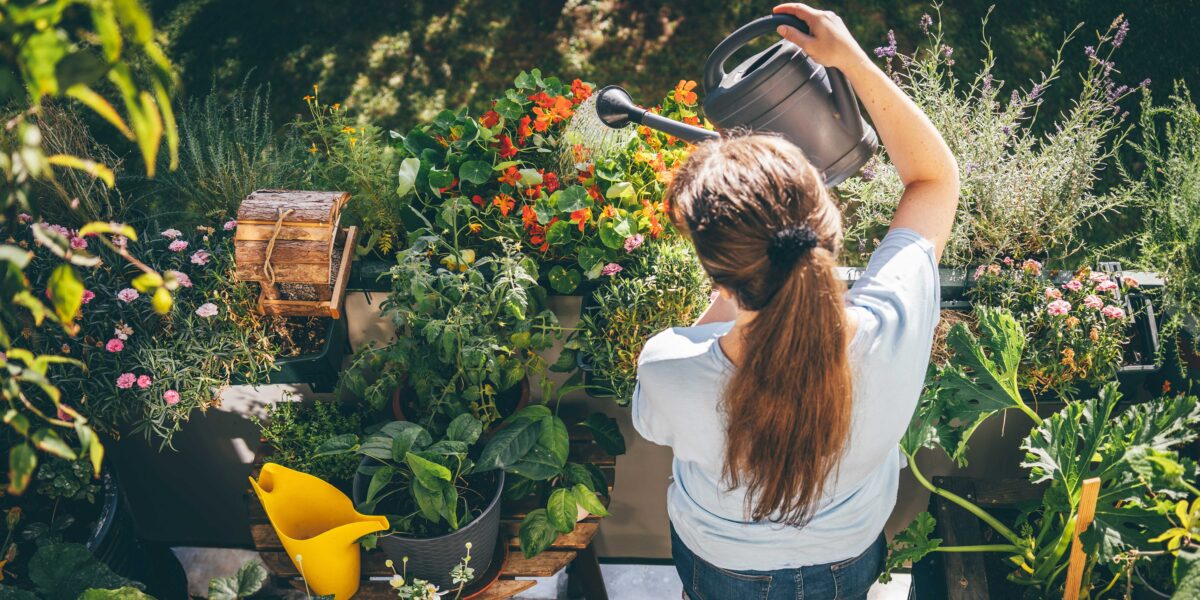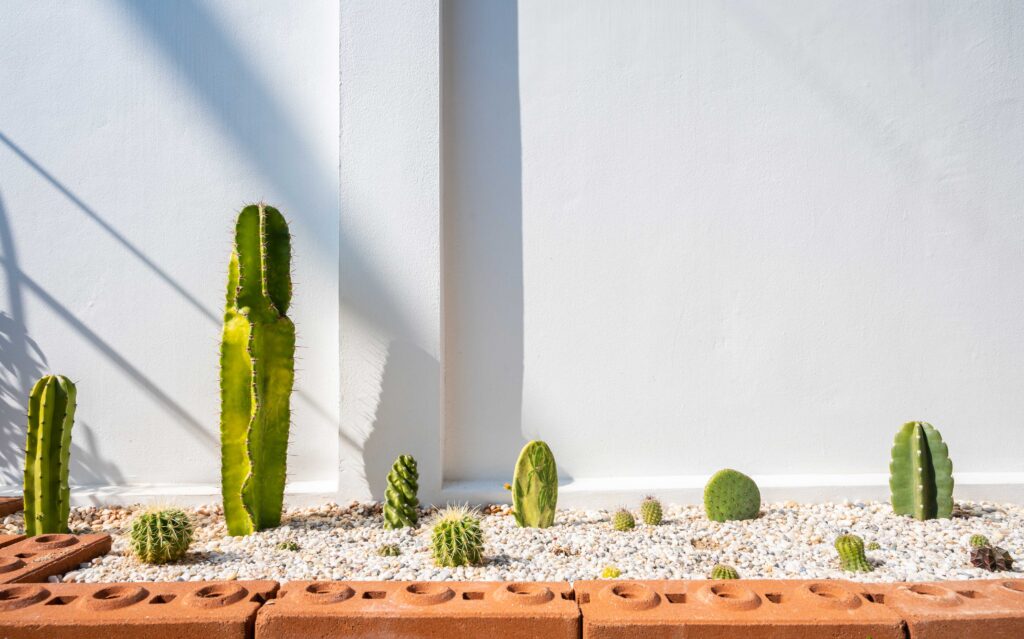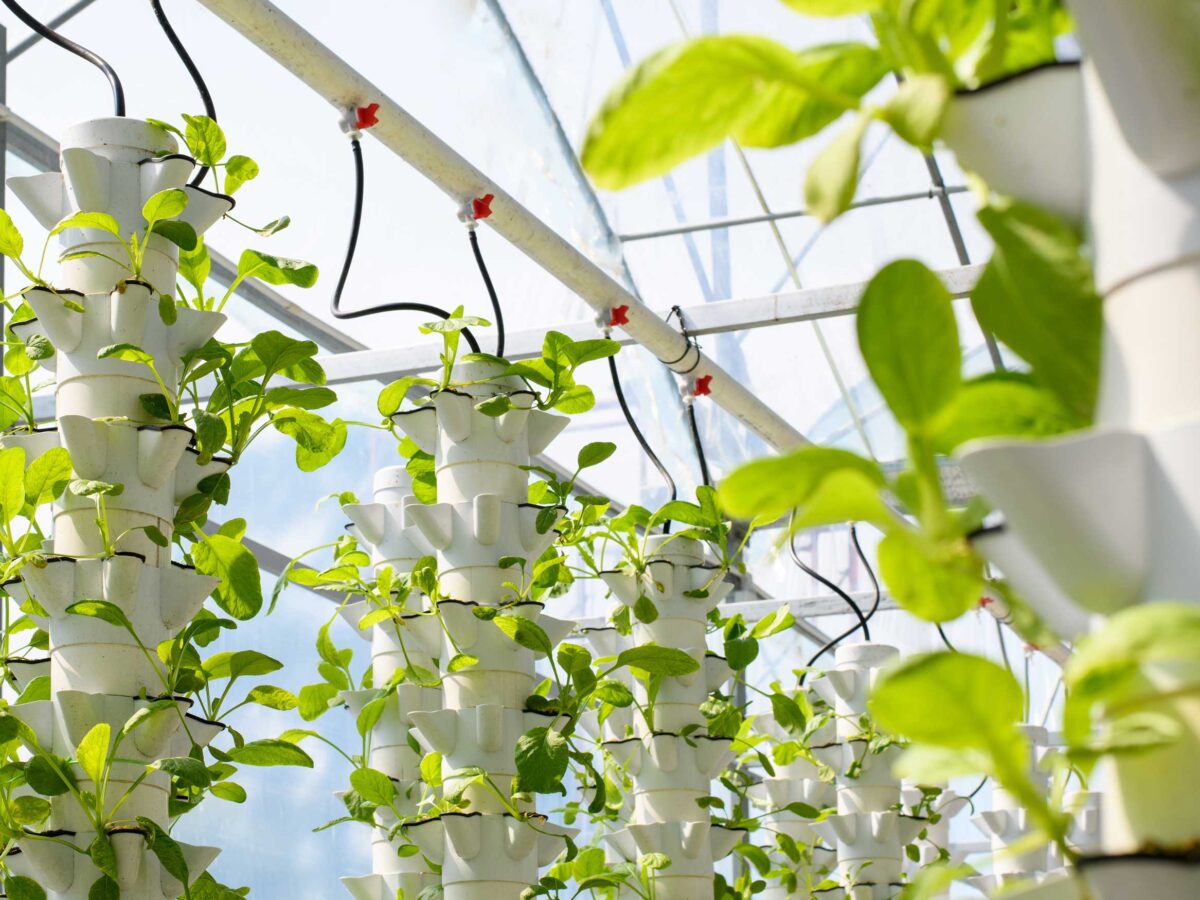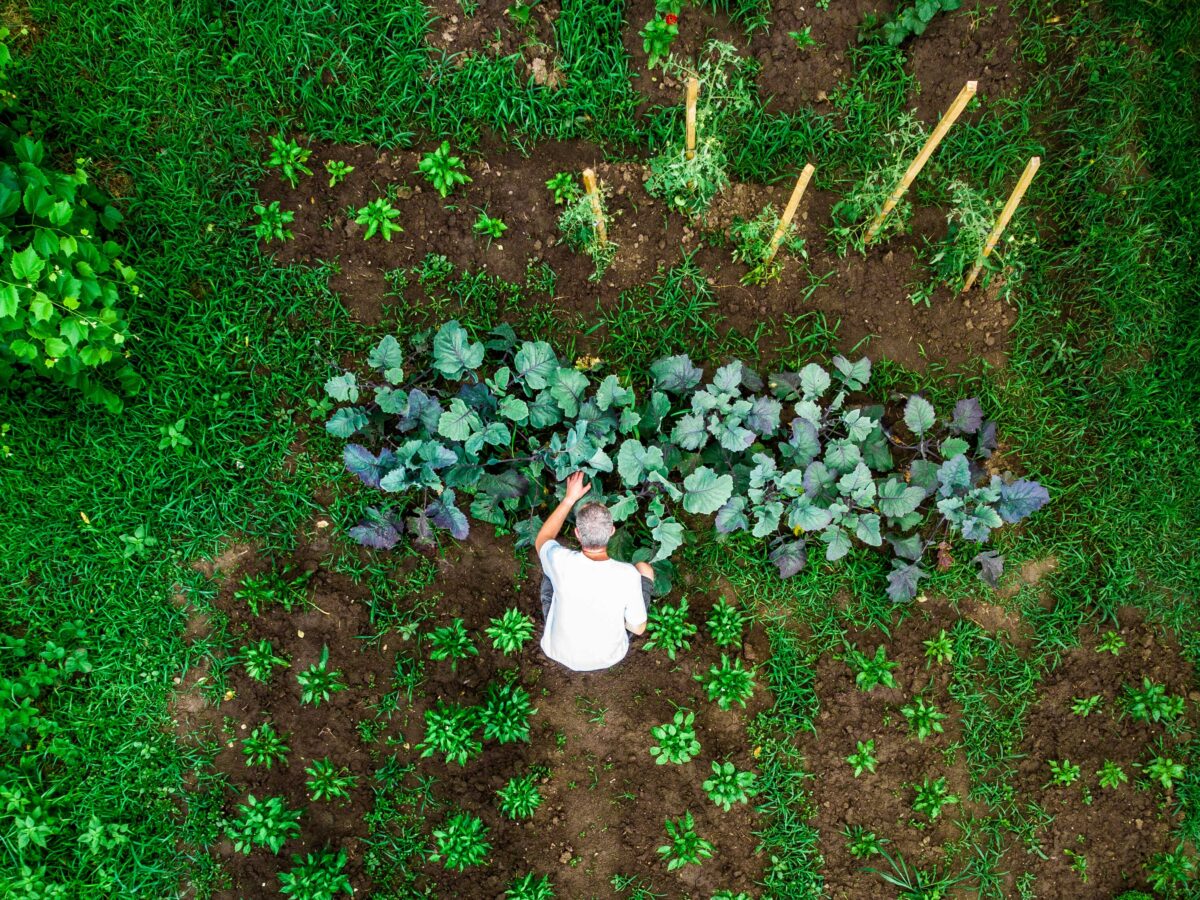
The Garden Trends We Want to Leave Behind in 2025
It’s time to make room for fresh and meaningful garden practices in the new year.

Westend61/Getty Images
As gardeners, we’re always growing—literally. With 2025 around the corner, it’s time to reflect on the trends that may have once seemed innovative but no longer serve us or the planet. From synthetic lawns to concrete-heavy designs, we’re even challenging the traditional swimming pool. Leaving these behind isn’t about criticism—it’s about evolving into smarter, more connected gardeners who embrace practices that support the earth and enrich our outdoor spaces. This year, let’s continue to make room for lush, resilient landscapes that nurture pollinators, prioritize water conservation, and harmonize with the environment. Here’s what we’re wanting to see left behind—and how to garden better in 2025.
Landscaping Trends to Retire
1. Concrete-Dominated Designs

AzmanJaka/Getty Images
Sleek, minimalist patios with expanses of concrete were all the rage for their modern, clean look. This design trend, mostly aimed at water saving and low-maintenance living, actually does more harm than good, with non-permeable surfaces that don’t capture water runoff or provide habitat options for wildlife.
Why It’s Time to Move On: Concrete is notorious for its heat-retentive properties, turning your patio into a sun-scorched baking zone on hot days and contributing to the urban heat-island effect. Not to mention, the production of concrete comes with significant environmental costs, including high carbon emissions.
Try This Instead: Consider embracing materials that encourage sustainability and human connection. Replace large concrete areas with permeable pavers, gravel, or flagstone, which allow water to flow through, reducing runoff and replenishing groundwater. Mix in natural, local stone or clay tiles for warmth and texture with a lush blend of plants to soften the hard edges and introduce biodiversity.
2. AstroTurf and Synthetic Lawns

Wirestock/Getty Images
Synthetic lawns, often sold as the ultimate solution for low-maintenance landscaping, are popular, especially for real estate flippers and home sellers. While the appeal of less work is tempting to some, these artificial grass alternatives leave homeowners with a hot, plastic-covered surface that doesn’t replicate the natural beauty of real plants.
Why It’s Time to Move On: Most synthetic grasses are made from petroleum-based products, which add to the growing microplastic pollution that’s now pervasive in our ecosystems. These materials can break down over time, leaching harmful chemicals into the surrounding environment. Not only a major contributor to heat islands, synthetic lawns also completely hinder soil ecosystems, denying the space for beneficial organisms like earthworms, fungi, and plant roots to thrive.
Try This Instead: Continue to embrace alternatives that are both eco-friendly and beautiful. Native meadow plantings are still a fantastic option, but if you’re craving a more traditional lawn feel, consider planting clover or native grass blends which require less water and fertilizer, or rockery and rain gardens that are both stunning and low-maintenance.
3. Monochromatic Plant Palettes

Boy_Anupong/Getty Images
Minimalist, monochromatic, or mono-culture plant palettes have been mistakenly interpreted as carefully curated, visually unified landscapes, gaining popularity for their calm, minimalist aesthetic and Instagram-worthy beauty. Single-color planting might seem chic, but it leaves a void of discovery and biodiversity for any style of gardener.
Why It’s Time to Move On: Monochromatic palettes can feel sterile or monotonous, and they are also missing out on the richness that comes with providing for wildlife. Single-tone landscapes fail to provide a variety of food sources for pollinators, like bees, butterflies, and birds who thrive on the diversity of nectar-rich flowers. A lack of color variety means fewer plants to attract these essential creatures, diminishing the garden’s ecological value.
Try This Instead: Try mixing vibrant wildflowers with lush, green grasses, or combine various types of low-growing ground covers or flowering shrubs. Consider including plants with different blooming seasons, from springtime tulips to summer lavenders, and autumn asters, so that your garden is always providing a food source for pollinators throughout the year.
Gardening Hacks to Leave Behind
1. Plastic Farm Towers

Jordan Lye/Getty Images
Over the past decade, stackable plastic pots and trendy self-watering systems became staples of the DIY gardening scene. These plastic containers promised convenience, ease, and a modern look, often marketed as the ultimate solution for small-space or urban gardeners.
Why It’s Time to Move On: Many of these products are not durable—exposed to the elements, they degrade quickly, cracking or fading under UV rays, leading to a short lifespan. Additionally, plastic containers often don’t allow for proper drainage, which can harm plant roots and hinder healthy growth. Beyond their functional failings, their widespread use contributes to the growing environmental problem of plastic waste.
Try This Instead: Terracotta pots, with their timeless appeal, allow for better air circulation and drainage, promoting healthier plant roots. Repurpose metal tubs, old barrels, or wooden crates to layer container choices upwards into a one-of-a-kind vertical garden with a minimal footprint. Get creative and make your own rustic, charming aesthetic while reusing materials that would otherwise end up in landfills.
2. Over-Fertilizing

coldsnowstorm/Getty Images
Social media exploded with garden hacks promising miraculous growth through homemade fertilizer concoctions or quick-acting miracle products that promised fast, dramatic results. At the end of the day, the gardening industry is a business—save your money and focus on providing the nutrients that really matter.
Why It’s Time to Move On: While these shortcuts may offer immediate, visible improvements, they often come at a greater cost. Overusing quick-fix fertilizers, whether homemade or chemical, can harm soil health by disrupting the delicate balance of the soil microbiome.
Try This Instead: It’s time to focus on building long-term soil health through natural, sustainable practices. Composting is one of the best ways to improve soil structure, enrich it with nutrients, and support microbial life. A steady application of slow-release organic fertilizers, like composted manure, worm castings, or balanced organic blends provides a steady stream of nutrients without overwhelming the soil.
3. Decorative Raised Beds

Tashi-Delek/Getty Images
A wide range of chic raised beds have entered the market as stylish, high-design elements in the garden. Instagram-worthy garden accessories made from trendy materials—like metal or plaster, sometimes designed with ornamental legs—might look nice, but many of these decorative beds prioritize looks over practicality.
Why It’s Time to Move On: While these elaborate raised beds may look good in photos, many are poorly designed and don’t consider the practical needs of gardeners. Shallow or poorly spaced beds limited plant growth, while trendy materials like untreated wood or thin metal are prone to warping, rotting, or rusting after just one season.
Try This Instead: Opt for the tried and true vs. trending. Untreated, rot-resistant wood, such as cedar or redwood, which naturally withstands moisture and decay over time, is the gold standard.
Bye-Bye Water Wasters
1. Over-the-Top Water Features

Jacky Parker Photography/Getty Images
In 2024, oversized fountains, elaborate reflective pools, and dramatic water walls became a trend, creating bold focal points in many gardens. These grandiose water features promised luxury and tranquility, becoming a symbol of outdoor opulence.
Why It’s Time to Move On: While striking, the ongoing need for water refills, chemicals, and energy for pumps can lead to increased utility bills and a higher carbon footprint. Additionally, many of these elaborate features go underutilized, becoming more of a maintenance burden than a practical or functional addition to the garden.
Try This Instead: Embrace water features that work with nature rather than against it. Opt for rain gardens, seasonal ponds, or small, low-maintenance water features that capture and repurpose natural water flow, benefiting both your garden and the environment.
2. Misdirected Irrigation Systems

AleMasche72/Getty Images
Automated drip irrigation systems were marketed as the ultimate solution to conserve water while keeping plants hydrated. Many of these systems were installed without a clear understanding of plant needs or proper zoning, leading to inefficient water distribution and leaving plants that are either overwatered or left thirsty.
Why It’s Time to Move On: Misdirected or poorly calibrated irrigation systems not only waste water but also undermine conservation efforts by irrigating inefficiently. Overwatering can lead to waterlogged soil, which encourages root rot and invites pests and diseases, while underwatering can stress plants, weakening their growth and resilience.
Try This Instead: It’s time to take a more thoughtful, tailored approach to irrigation. Consider adjusting the placement of emitters and Implementing smart irrigation controllers that can also drastically improve efficiency. Say goodbye to inefficient, one-size-fits-all irrigation systems. By auditing, adjusting, and installing alternative sprays like micro-heads and bubblers, you can create an irrigation system that is customizable and flexible while supporting water conservation.
3. Chemical-Dependent Swimming Pools

Justin Paget/Getty Images
Traditional chlorine-based swimming pools require constant chemical treatments to keep the water pristine and safe for swimming, often demanding regular doses of chlorine, algaecides, and other harsh chemicals.
Why It’s Time to Move On: Chemical treatments used to keep them clear can run off into the environment, contaminating nearby water sources and harming local ecosystems. In addition to being unsustainable, these pools fail to provide any ecological benefit and can feel disconnected from nature.
Try This Instead: Natural swimming pools, also known as bio pools, use plants, gravel, and biological filtration systems to keep the water clean and clear, without the need for chemicals. These pools are designed to mimic natural freshwater ecosystems, allowing plants like water lilies, rushes, and aquatic ferns to purify the water through natural filtration. They offer the same cooling benefits as traditional pools, but with the added bonus of providing a habitat for wildlife and creating a stunning, sustainable backyard retreat.
